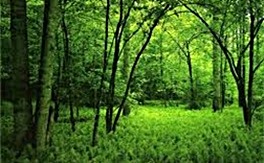Climate impacts in northern forests
Northern forests hold around 54% of the world’s total terrestrial carbon stock and contribute more than one-third to our global terrestrial carbon sink. This report reviews the impact of human induced
Northern forests hold around 54% of the world’s total terrestrial carbon stock and contribute more than one-third to our global terrestrial carbon sink. This report reviews the impact of human induced
<p>During the 2011 International Year of Forests, WWF’s Living Forests Report is part of a year?long conversation with partners, policymakers, and business about how to protect, conserve, sustainably use, and govern the world’s forests in the 21st century.</p>
<p>This essay argues that the Forest Rights Act 2006 is designed on the principles of labour teleology. It undermines the foundational position of forests, prepares them to become a playground for profits and minimally serves the interests of the marginalised tribal and forest dwellers.
<p>The World Bank has released a report titled "Mitigating Climate Change through Restoration and Management of Coastal Wetlands and Near-shore Marine Ecosystems," which finds that drainage and degradation of coastal wetlands emit significant amounts of carbon dioxide directly into the atmosphere and lead to decreased carbon sequestration.
<p>The World Bank Institute and Forest Carbon Partnership Facility have released a manual for assessing the true costs of REDD+ action aimed at saving and restoring forests.

<p>The National Mission for a Green India has been approved by the PM’s Council on Climate Change. It aims to increase the quantity and quality of 10 million ha. of forest area, achieving an annual CO2 sequestration of 50 to 60M tonnes by 2020.</p> <p> </p>
Smallholder farming system throughout the world are believed to be potential sinks to remove atmospheric CO2. Smallholder bamboo farming system in Barak Valley, Assam, which forms a part of the traditional homegarden system, holds promise in this respect.
Smallholder farming systems throughout the world are believed to be potential sinks to remove atmospheric CO2. Smallholder bamboo farming system in Barak Valley, Assam, which forms a part of the traditional
<p>Soil organic carbon was estimated in four land uses viz. forests, plantations, agroforestry and horticulture in Haridwar district. Over all 425 soil samples were collected from different land uses at various locations.
The river loops low past its bleached-white banks, where caimans bask in the fierce morning sun and stranded houseboats tilt precariously. Nearby sits a beached barge with its load of eight trucks and a crane. Its owners were caught out long ago by the speed of the river's decline. This is what it looks like when the world's greatest rainforest is thirsty.
This famous beach resort, which will next week host international climate change talks, was itself born from the destruction of a potent resource to fight global warming. Thick mangrove forests lined the canals and waterways here before developers dredged the land to make way for the upscale hotels that now draw several million tourists every year. In the 40 years since Cancun was founded, c